31 Mar A Guide to Hiking Pati Valley in Chapada Diamantina by a Solo Traveler
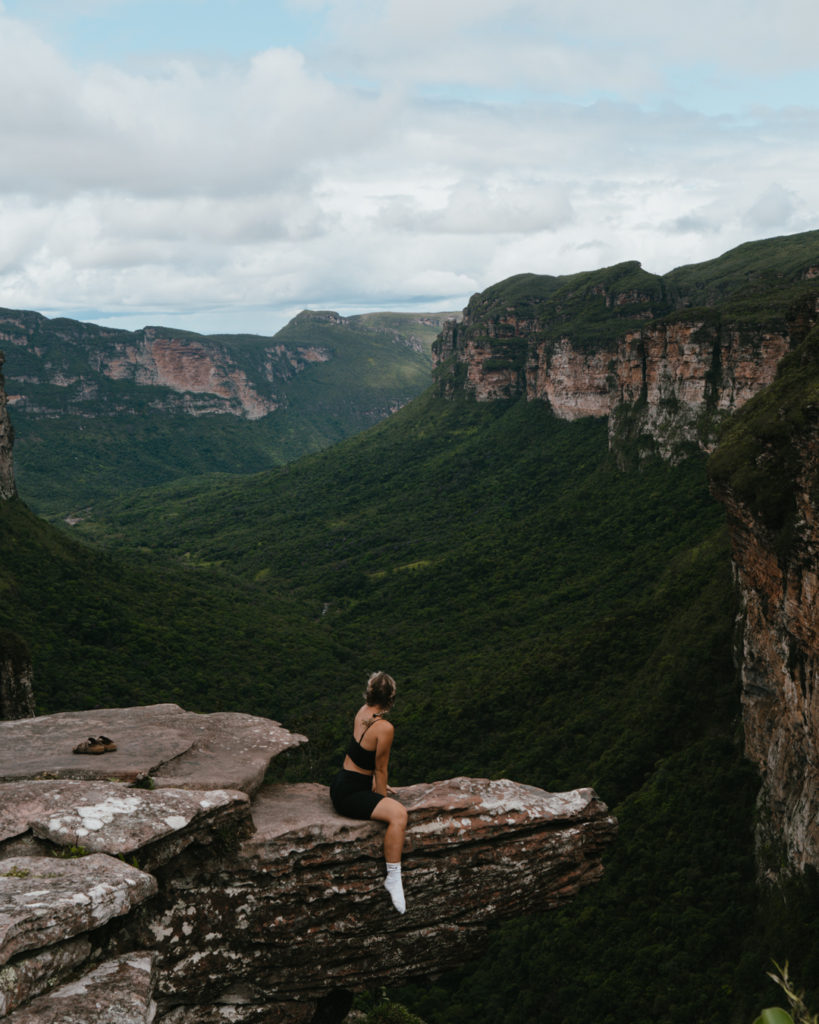
Chapada Diamantina is one of the most beautiful national parks in Brazil with a sprawling landscape of canyons, mountains, caves, rivers and waterfalls. It’s a nature lover’s paradise with seemingly no limit for the curious mind wanting to explore. But with so many hikes to choose from, there’s one trek in particular that will blow your mind: Pati Valley or Vale do Pati.
On this (minimum) 3 day trek you’ll see waterfalls, jaw-dropping views of canyons and valleys, and lodge in home-stays with Chapada natives. Trekking Pati Valley is unlike any other experience, and may be one of the most beautiful places in Brazil and one of the best treks in Chapada Diamantina.
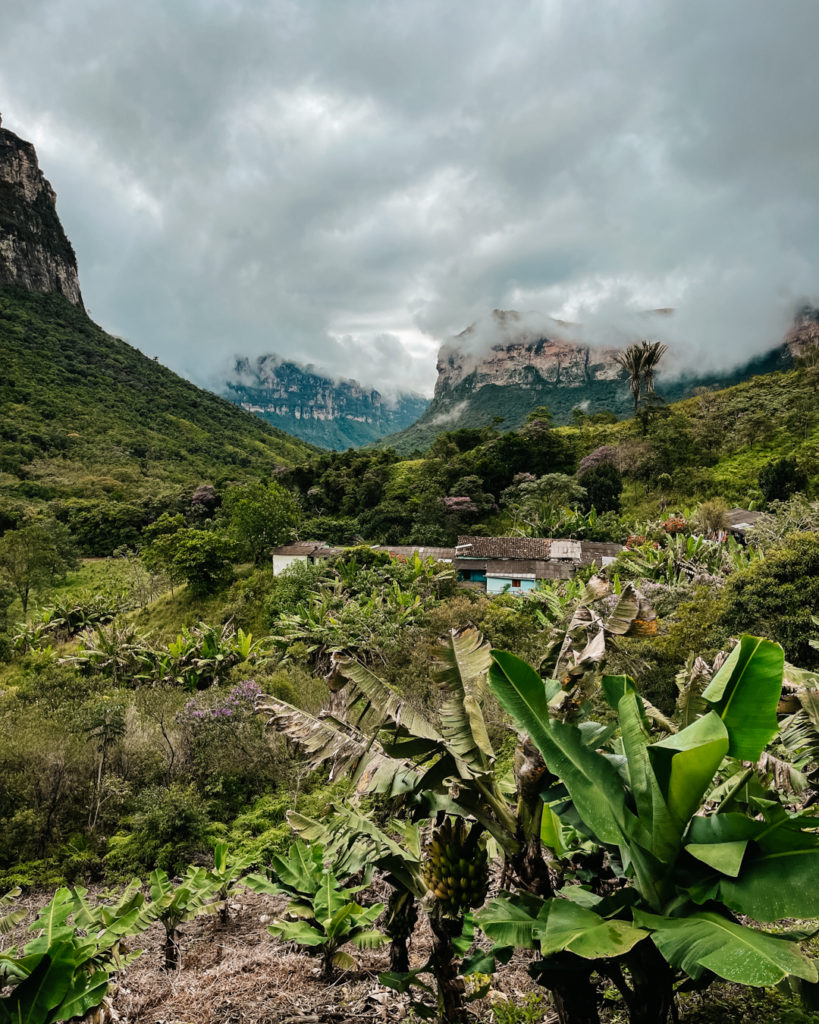
*This post includes affiliate links and I may receive a small commission at no additional cost to you. By using my links you’re merely supporting what I love to do: write this blog! I only recommend products/companies that I use myself.
My experience
When I was planning a trip to Brazil, I saved Chapada Diamantina as a must-visit destination as soon as I saw the photos. But truth be told, I had no idea how to go about exploring the vast park. To my luck, I met this guy in the lobby of a hostel in Mexico City on my way to Brazil. Without asking, he told me about one of his most beautiful experiences, 3 days of exploring the Pati Valley wilderness in Chapada Diamantina, enjoying the solitude of nature in a paradise nearly untouched by people.
That was all I needed to hear and obviously, I made plans to go myself with this trek in mind.
Fast forward a month, and I arrived in Chapada alone, with all the desire to see Pati Valley but none of the plans. Things always seem to work out though, because the hostel receptionist informed me a group was leaving first thing in the morning if I wanted to join. Immediately, I started packing my bag.
Trekking Pati Valley was everything I wanted: an adventurous challenge, 3 days of solitude away from the outside world, and a fresh look at this beautiful earth. I would recommend it to everyone traveling Brazil looking for some adventure, even the solo travelers.
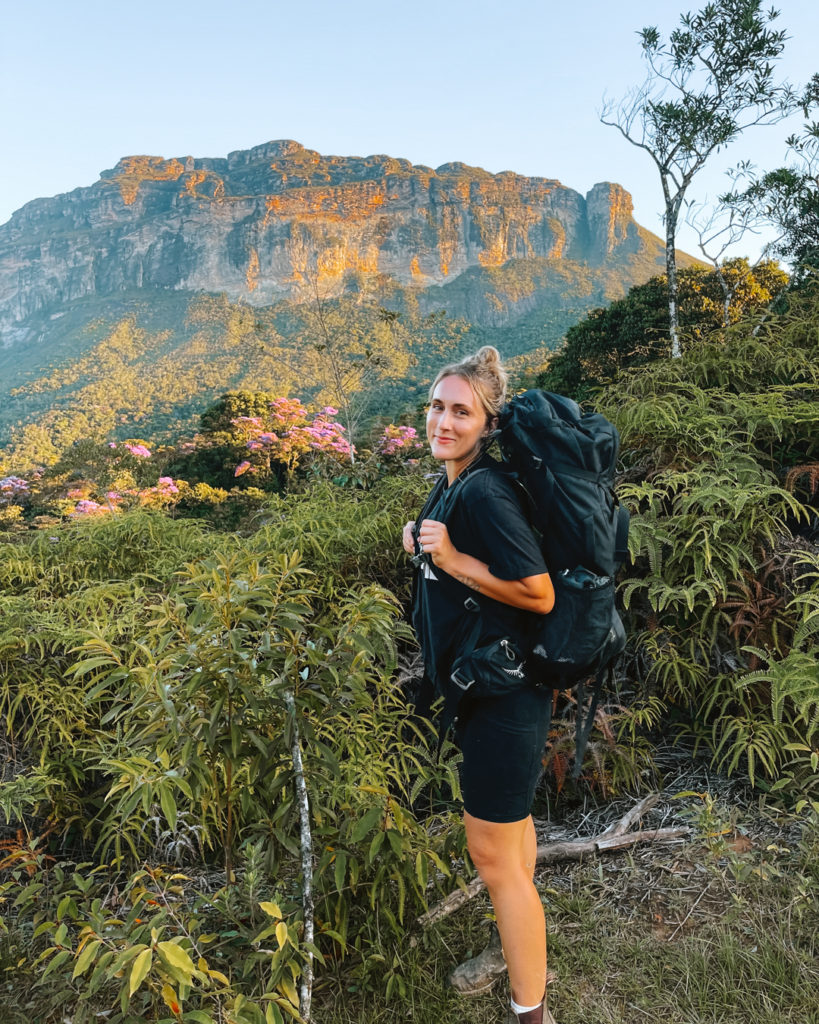
A little about Chapada Diamantina
Chapada Diamantina is a national park in central Bahia larger than many countries, spanning 587 square miles or 1,520 square kilometers. The landscape is rugged and lush with canyons, waterfalls, and cliffs. Originally the trails here were used by miners in search for gold and especially diamonds.
Because of its vastness, there are a thousand hikes you could do in Chapada Diamantina, some for one day, others for many days. Pati Valley is especially enticing for those with the ability to trek for 3 days because of its beauty and how much you’ll see.
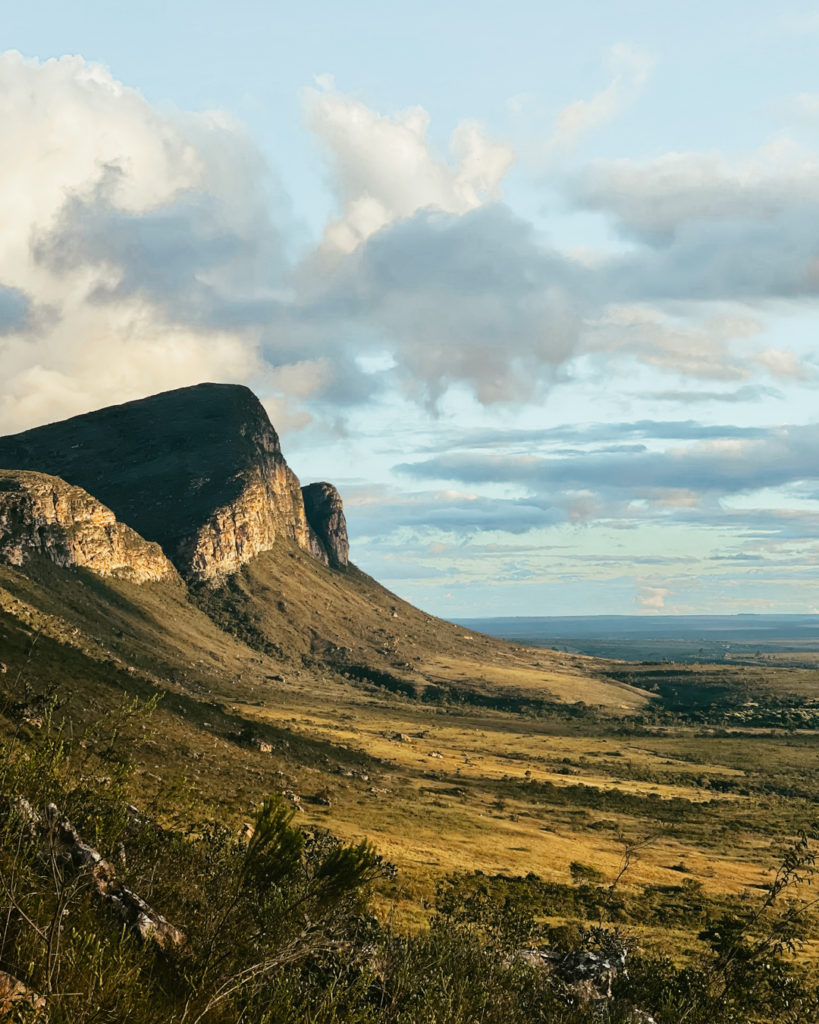
What you’ll see in a tour of Pati Valley:
Pati valley tours can differ slightly in what destinations they include (mainly on the second day), but most itineraries involve:
Day 1: Being picked up in Lencois and driving 2 hours to the trailhead. Hiking into the valley, seeing the Pati Valley Overlook and Cachoeira dos Funis (Funis waterfall). About 15 km ( 9.3 miles).
Day 2:Hiking within the valley, up to Morro do Castelo (Castle mountain, the Castelo cave, and an overlook of Pati valley and Calixto valley. About 10 km ( 6.2 miles).
Day 3: Hiking out of the valley through the prefecture slit, stopping by Cachoeirão (the second highest waterfall in Brazil) and Guiné overlook. Then hiking back to the trailhead for pickup. About 19 km (12 miles).

MORE DETAILS & What’s included in a Pati Valley trek:
To take a tour of Pati Valley, first you’ll need to get yourself to the town of Lencois on your own. From there, there are a number of agencies but packages may differ. However, most tours include pick up and transportation to the trailhead, a trekking guide, lodging in a homestay while in the valley, and all food throughout your trip.
This is bare minimum, but when comparing tours make sure to ask what materials, locations, and services are included to double check and compare each.
Another thing to think about is language. It’s possible to find tour guides who speak English, but not guaranteed. However, the below tour agencies do have English speaking guides available.

Cost & When/Where to book your tour:
When researching Pati valley, I looked into a few different options which I recommend everyone does so that #1, they get the best price, and #2 they find a tour that fits into their time frame. It cannot be assumed that tours are always available, especially if you’re a solo traveler or a couple. Most groups have a minimum requirement of 3 people unless you want to pay significantly more money. Therefore, different agencies/groups will leave on various days, so it’s best to check a few options:
1. Chapada Backpackers through Albergue de Lencois Backpackers Hostel.
This is who I booked with, and was really pleased. I had an English speaking guide and went with a wonderful couple from my hostel. Conveniently, I was able to leave all my stuff for free at the hostel while I trekked and came back to my same room. This tour was also by far the best price to be found for Pati Valley at 1000 BR (~ $210 USD).
To book a tour, get a room at Albergue de Lencois Backpackers and then email them about the Pati Valley Trek. They’ll give you more details and let you know if a group is available.
2. ZenTur
This is a really popular tour agency in Lencois with reasonable prices. The Pati Valley trek starts at 1350 BR (~ $285 USD). To learn more, go to their website or message on Whatsapp +55 75 9955 9482
3. SoTrekking Chapada
The guide Rodrigo is a lot of fun and really knowledgeable. It can be difficult to find a good English speaking guide in Lencois, but Rodrigo’s English is perfect and he’s also really fun. I met him during my Pati Valley tour and plan to trek with him if I return to Lencois. Learn more by messaging @sotrekkingchapada on Instagram or messaging on WhatsApp here.
In terms of when to book, I definitely recommend contacting agencies before arriving to let them know you’re interested so they can make arrangements. But it’s also not uncommon to just show up in Lencois and make arrangements from there and even easier if you have a few days to spare.
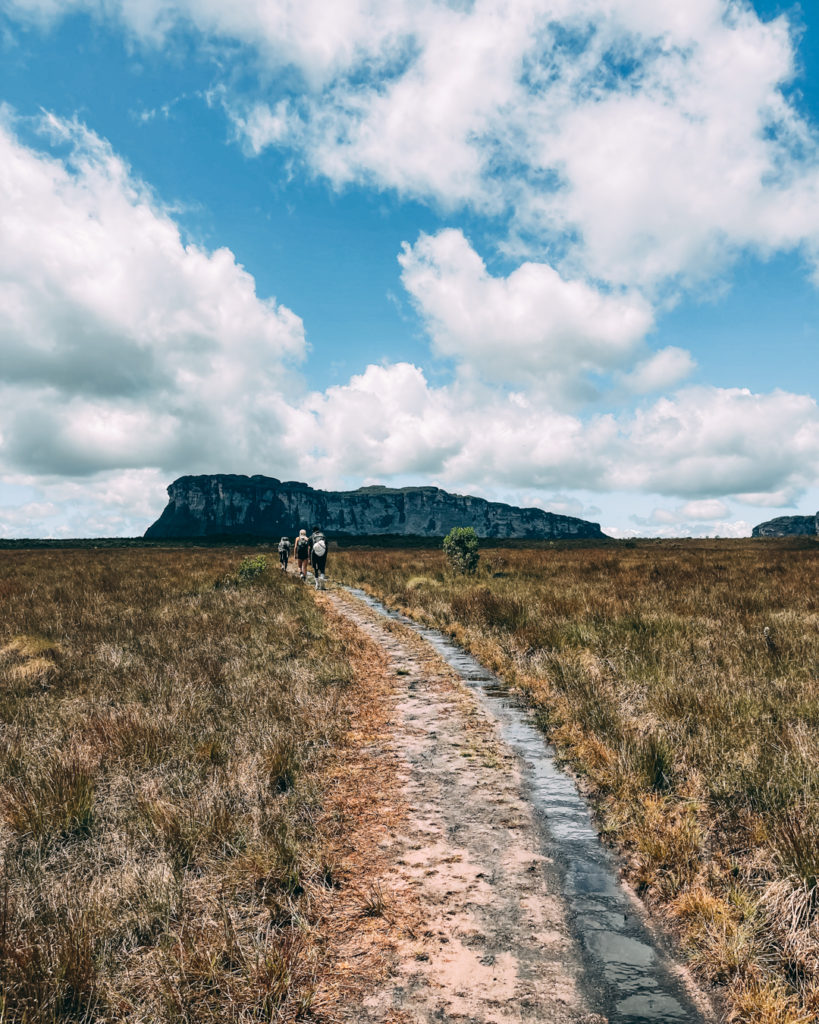
Who should hike Pati Valley?
If you’re thinking of hiking Pati Valley I would definitely recommend it to those in relatively good shape. You’ll hike 10-20 km each day and most days carrying gear. That being said, if you’re in shape I don’t think you necessarily need to train for this trek. Some parts are difficult because they’re uphill, and even the “flat parts” involve scrambling over rocks. However you don’t need to be a “pro-hiker” for this.
To put it into perspective, I’m a “naturally” in shape person because I grew up exercising regularly through dance. However, leading up to this hike I didn’t work out for maybe a month and was fine. If you’re unsure if this is the trek for you, ask a guide’s opinion as well and keep in mind the less stuff you bring, the easier the trek is.
Beyond physical abilities, there’s not much limitation to who can trek Pati Valley. I went as a solo female traveler and joined a group, people of different ages do it, and it’s possible to find a guide who speaks Portuguese, English and sometimes Spanish.
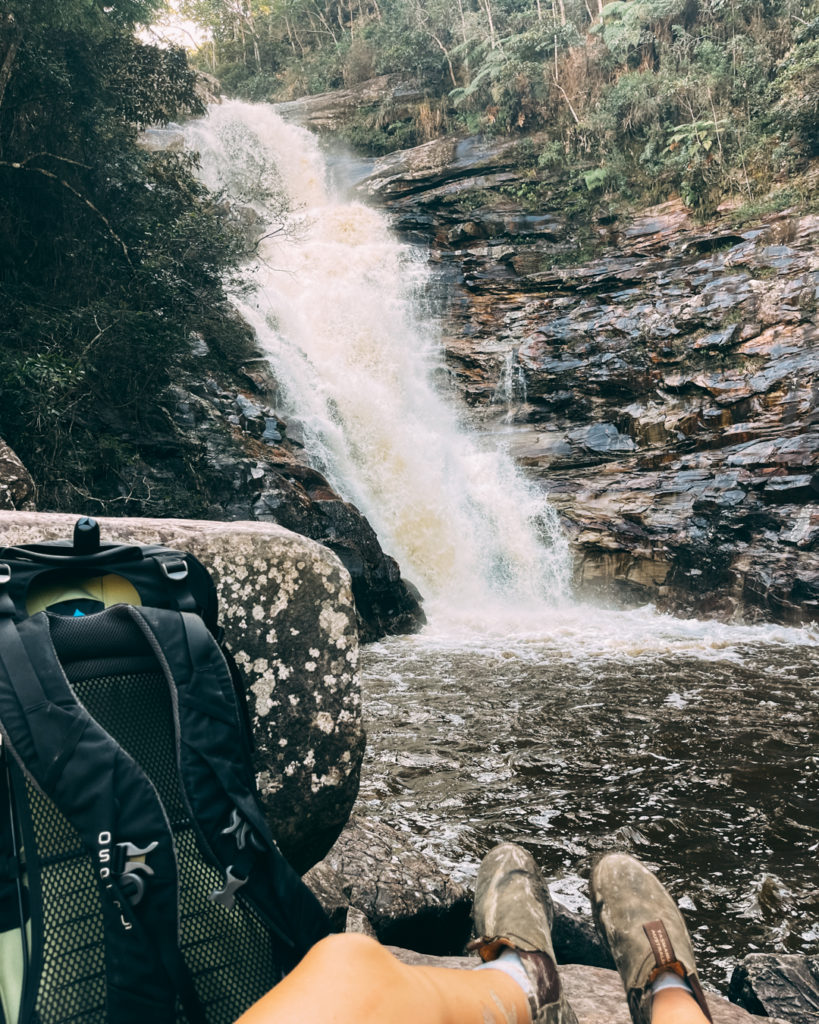
Getting to Lencois where you’ll begin your trek
To get to Lencois, most come from Salvador, Bahia via bus. It’s about 7 hours (longer if there’s traffic) and has a morning, afternoon, and night bus available both ways (to and from Lencois).
For solo travelers especially, I recommend taking the morning or afternoon bus. Yes, it’s a pain to waste nearly a whole day on the road, but the night bus arrives in the middle of the night at 4am which is not only inconvenient but also not the best idea. Lencois is really safe, but it’s still best to be cautious when alone. Plus, killing that time at 5am until check-in really sucks.
The other option to get to Lencois is to rent a car in Salvador. This is a nice option if you’re with a group and can split the rental and gas prices. Renting a car, you can also explore Chapada Diamantina via other towns, as well, such as Vale do Capão.

Where to Stay in Lencois:
Before you head out to Pati Valley, you’ll most likely stay at least one night in Lencois before, and need at least one night when you return. Additionally, you’ll need a place to leave the majority of your belongings while trekking.
I highly recommend staying at Albergue de Lencois Backpackers Hostel. It’s affordable for solo travelers, and they have both dorm and private rooms available. The staff here is knowledgeable and as I mentioned before, you can book tours through them, including Pati Valley.
Another convenience to Albergue, is that you can leave your belongings here for free while trekking and move booked reservations around to accommodate any tours you have planned. (For example, I booked for two consecutive nights but moved my second night to when I returned 3 days later from trekking).The cost per night depends, but I booked a dorm bed in a 4 person, all-female room for $8 USD a night. Check availability and book your stay on Hostelworld.
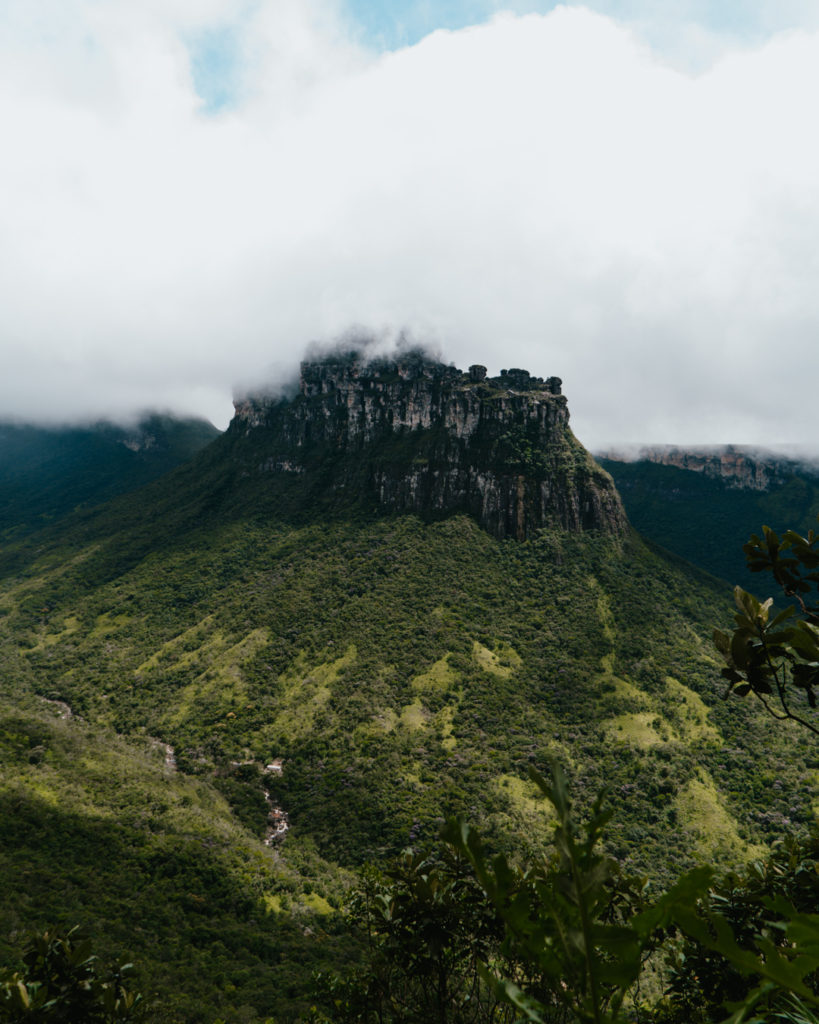
What to bring:
When you book a tour, they should give you a full list of what they recommend packing. However, after doing the trek myself here’s what I advise:
1. A supportive backpack
I used my Osprey FarPoint Trek 55L and it served me very, very well. This is the larger one of my bags I travel with, but I opted to bring it and just pack less to carry, rather than using my less supportive, small front pack. In my opinion the Osprey FarPoint Trek is the perfect backpack because of its versatility as a travel pack and trekking pack. Because of its supportive technology, I really had no trouble at all carrying my gear while hiking.
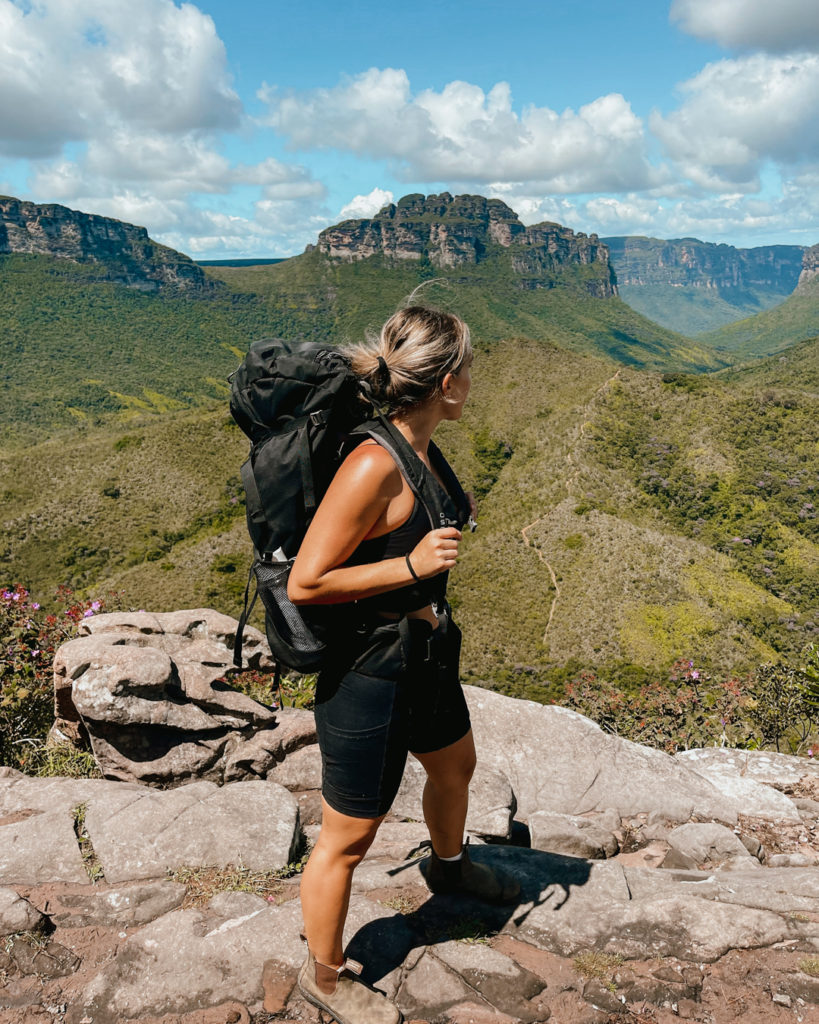
2. Hiking shoes
The most supportive and comfortable shoes you have to hike in, please wear. You’re going to be walking far in Pati Valley so do your feet a favor. I won’t recommend what I wore, because while they are super-high quality shoes, I got a ton of blisters.
What I will recommend are the hiking boots I unfortunately left at home, Columbia Newton Ridge. These have never failed me and are super comfortable and durable. Check them out on Amazon.
You can also wear your favorite pair of sneakers but know that you will be in mud and you need something with traction for the rock scrambling.
3.Light flip flops
When you get back to the homestay, the last thing you want to do is walk around in the shoes you just hiked in for hours. Give your feet a break and bring some light flip flop or slides to shower in and walk around after hiking.
4. Hygiene products, but the bare minimum
Obviously, bring what you need: toothbrush, tooth paste, face wash, face moisturizer, shampoo, conditioner, soap, and period products if needed. But don’t bring more than that. Remember, whatever you bring you have to carry and small things can add up so now is not the time to bring your favorite serums or extra product. If you have small airplane bottles then definitely use them.
5. Sunscreen and bug spray
Both of these items you’ll 100% need. The bugs are not bad in Chapada Diamantina (at least while I was there) but some mosquitos will be out during dusk. As for the sun, it can beat down on you throughout the day and you’ll need to reapply sunscreen often.
6. A hat
Again, make sure to protect your face from the strong sun that you’ll be under for hours each day. IT’s also nice to cover up your dirty hair in photos…My go to is a baseball cap or bucket hat.
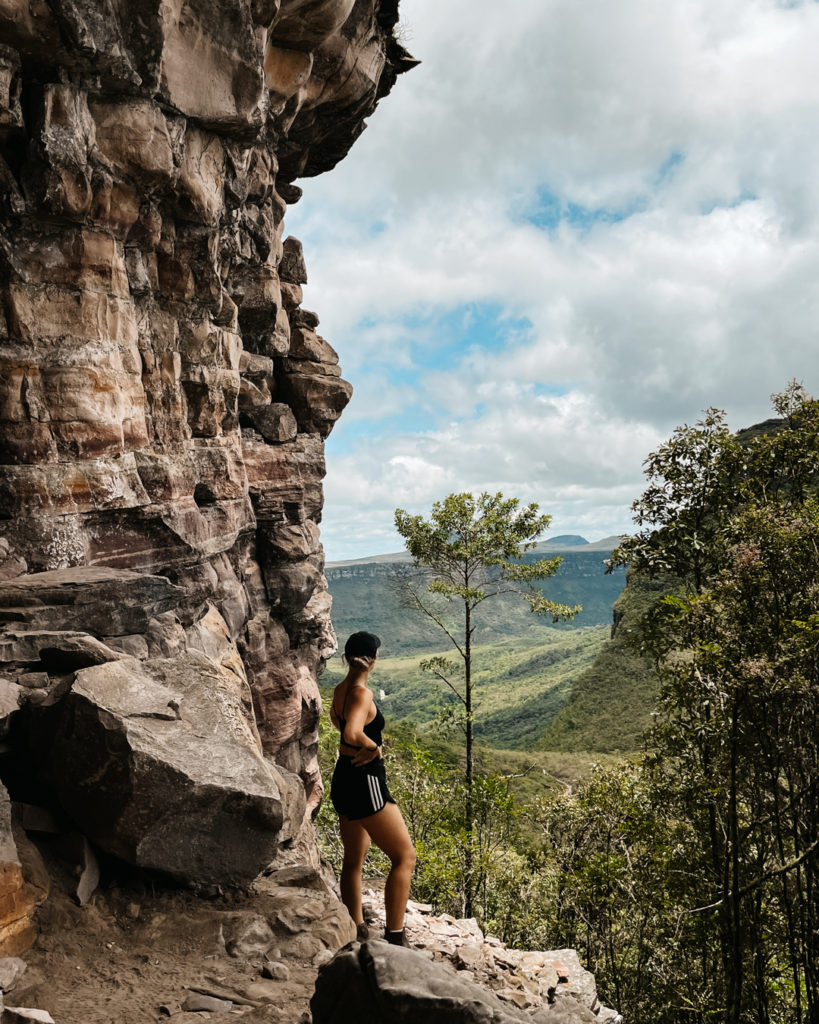
7. First aid kit
Most agencies try to make it as clear as possible that your guide is not your pharmacy and will not have a first aid kit for you. Therefore you need to bring any meds or items you could need during the trek.
A standard first aid kit will do, but I especially recommend bringing bandaids, alcohol, blister band aids if you have them, gauze, tape, and DiaResQ. All just in case, but definitely not something to skip out on when packing should you need them.
8. Charger and outlet converter
Most home-stays will have solar energy so you can plug in your phone/camera. You won’t have service when in Pati valley, but of course you’ll want a full battery to capture the beautiful scenery. If you don’t use the Brazilian outlets (different from the U.S.) make sure to also pack your converter.
9. Rain jacket and backpack rain cover
Hopefully it doesn’t rain, but you never know. The best thing you can do is have a cover for your bag so your clothes and food do not become soaked in the event of a storm.
If you get the Osprey FarPoint Trek backpack, it comes with a rain cover, but you can also purchase cheaper rain covers separately on Amazon.
As for a rain jacket, for any trip I recommend bringing a quality rain jacket. Not a cheaper one that is “weather-proof” because you’ll be wet in a half hour. It’s best to invest in a high quality one that actually keeps you dry. Trust me, I’ve learned the hard way. Mine is by NorthFace and it’s one of my best travel purchases. Check it out on Amazon.
10. Bare-minimum, lightweight clothing
You’re going to be hiking and sweating the whole time, so best to accept it and bring minimum clothing. Some people re-wear clothes to save space or you can bring a new hiking outfit for each day that pack tight.
I brought 2 t-shirts and shorts, and after the first day I immediately rinsed the clothes and hung them out to dry through day 2 so it was ready to re-wear on day 3. Gross, maybe, but you’re going to be muddy and smelly regardless so at least you don’t need to carry extra stuff.
Whatever you decide though, here’s a rough list of what you need:
- Hiking outfits for 3 days with hot weather in mind
- Sports bras/underwear
- Socks for 3 days
- Warm clothes for at night
11. Reusable water bottle
Throughout the trek you’ll be able to fill up your bottle from the homestay taps, rivers, and waterfalls. Fair warning, the water is brown but they say it’s completely safe to drink. Everyone I was with drank the water unfiltered and was perfectly fine.
That being said, I have PTSD from getting sick from water while traveling. So even before this trek, I got the LifeStraw Water bottle which has a built-in filter. That way I didn’t have to have a second thought over whether the water was safe to drink or not. Check it out on Amazon.

12. Extra snacks if needed
When I say extra snacks, don’t get carried away because this will be extra weight and your guide does bring a lot of food for meals (some of which you’ll be given to carry). However, if you’re the type of person that eats quite a lot or needs a boost of energy throughout a hike, then you may want to consider small, energy packed snacks to bring for yourself.
12. Cash for drinks
You won’t need to pay for much since everything you need is included in the tour, but should you like to purchase beer from the home-stays, make sure you have some cash.
And that’s it! I cannot stress enough, don’t bring what you don’t need because your back will not like you. Trust me, you won’t read that book and you’ll live wearing the same pj’s for 2 nights.
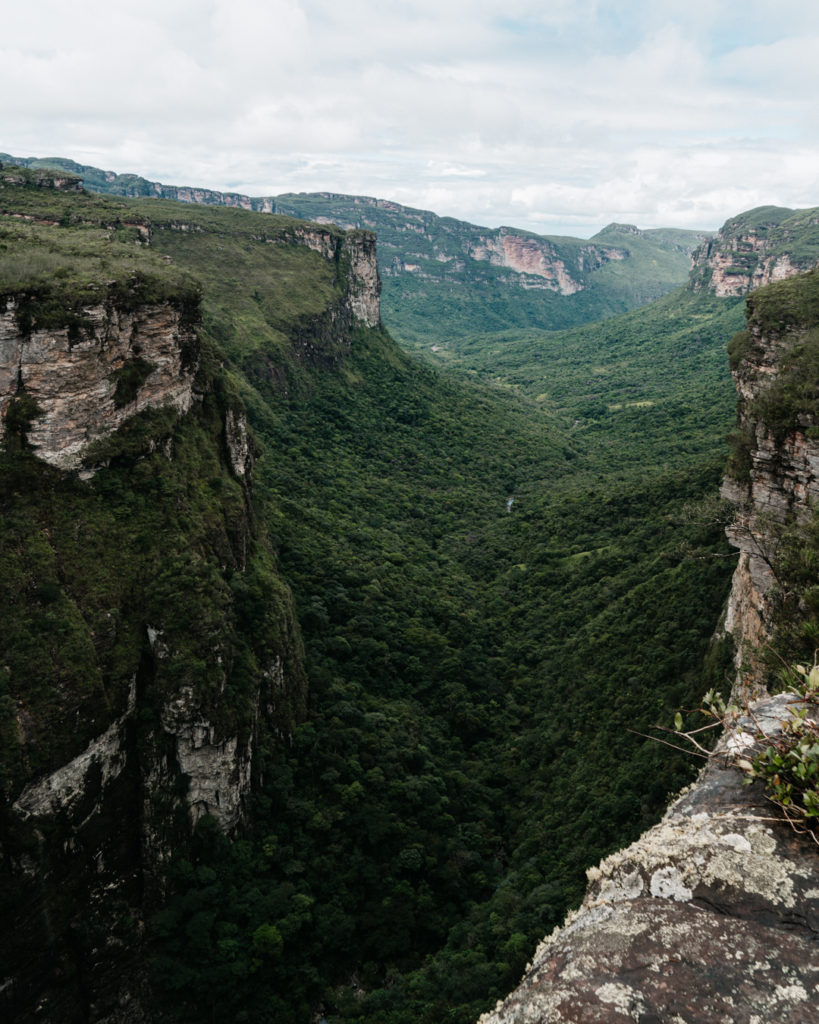
Know before you go:
A few things you should know before trekking Pati Valley…
1. Expect to pay for your tour in cash
The ATM in Lencois apparently only works one day a week, so I would not rely on this. Either come to Lencois with enough cash for your tour or be prepared to take out cash in Palmeiras, a small town on the way to Pati Valley. My group stopped here on the way to pick up groceries and we all took out money to pay later. If you intend to this, double check with your tour agency that you’ll stop in Palmeiras and don’t forget to bring your debit card on the trek to withdraw cash.
2. Be prepared to be fully immersed in nature
This is definitely more of a rustic tour. Yes, you’ll have a bed and shower, but they will be simple and cold. You won’t have cell phone service at all, but you will have beer and some new friends to talk to. Pati Valley is about being immersed in nature so be prepared to be completely disconnected from the outside world and living in the present moment.
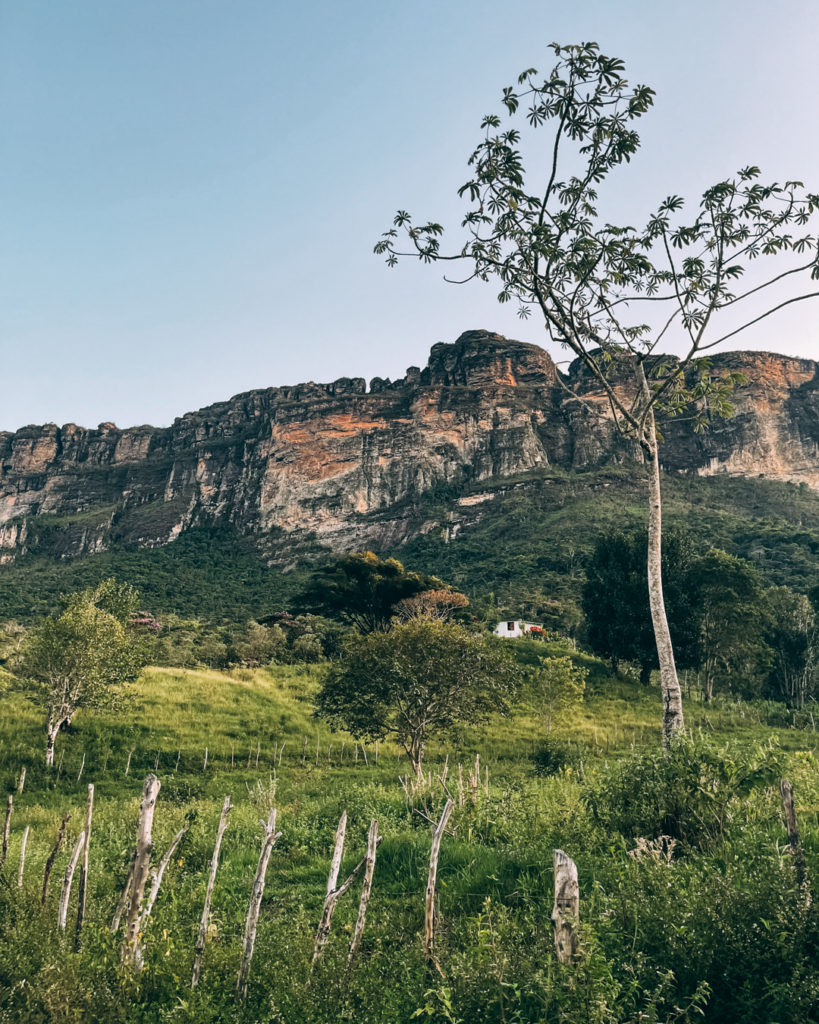
3. Tours typically have a minimum of 3 people
I mentioned this earlier, but most guides require at least 3 people to arrange a tour otherwise you’ll need to pay significantly more. This is why it’s good to contact a few agencies or go through a hostel (like Albergue Backpackers) and recruit some friends.
4. You’ll be drinking water from the river and streams
I also mentioned this earlier, but during the trek you’ll be drinking un-filtered water from the river and waterfalls. It’s completely safe to drink, but may look alarming because of its brown color from natural materials.
Although I promise it’s safe, if this bothers you, consider bringing something like the LifeStraw Waterbottle which is a lifesaver if you travel often anyways.

5. Prepare to have your mind blown!
The photos of Chapada Diamantina are stunning; but even still they do the park no justice. Hiking through Pati Valley will be some of the most magical 3 days of your life encompassed by the wild that stretches for hundreds of kilometers in every direction.

Travel insurance for Pati Valley:
Travel insurance is a must for every trip, but especially when doing something more adventurous like trekking you really need it in case of injury. Most will also cover you throughout your travels should you lose your belongings.
For a trip like this, I definitely recommend WorldNomads Travel Insurance which was made for adventurous backpackers .
Check pricing and coverage by clicking here or searching below.
Related posts
-
Carnival Rio de Janeiro 2024: Your Guide to the World’s Largest Party
Carnaval in Rio de Janeiro is one of the world’s biggest parties! Brazilians in costumes dance in th...
Brazil -
21 Dos and Don’ts to Travel Safe in Brazil
When I mention that I traveled to Brazil (majority of the time alone) one of the first questions I a...
Brazil Solo Travel -
The Ultimate List of Things to Do in Rio de Janeiro
Rio de Janeiro is one of the most amazing cities to visit in the world. It’s one of the few......
Brazil
Liked this post? Pin it!









No Comments